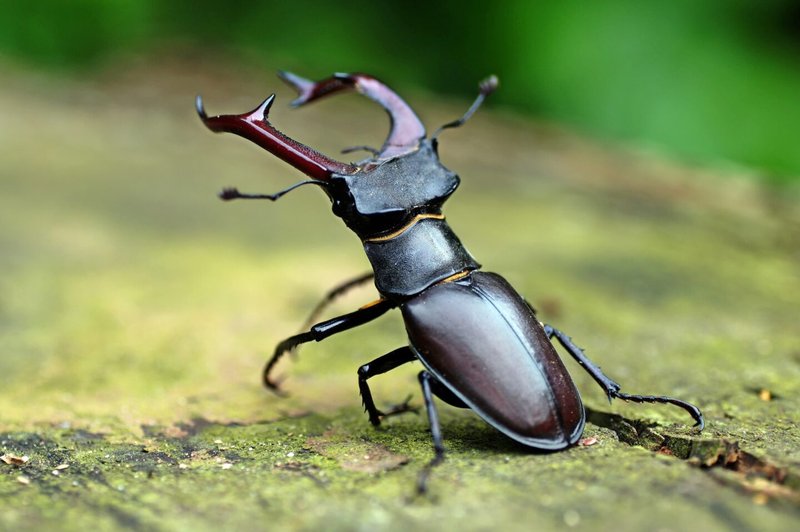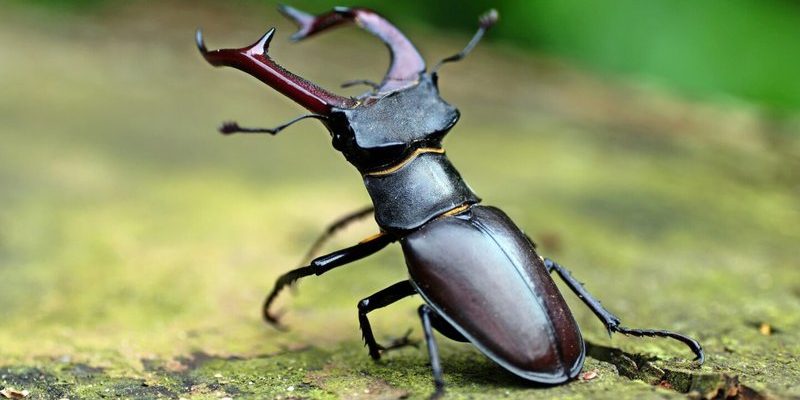
As we sip our coffee and dive into the world of stag beetles, think of them as the misunderstood rock stars of the insect world. They’re not dangerous, nor are they as fierce as they look. Instead, they play an important role in our ecosystems. So, let’s untangle some of the common myths that surround these intriguing insects and discover what’s fact and what’s fiction!
Myth 1: Stag Beetles Are Dangerous to Humans
You might have heard someone say that stag beetles bite or sting, leading to the belief that they could pose a threat to humans. Honestly, that’s not true! Stag beetles are harmless creatures. While their mandibles may look intimidating, especially in larger species, they are primarily used for mating displays and fights among males for territory.
In reality, stag beetles are more interested in finding food and mates than in interacting with humans. If a stag beetle does happen to grab onto your skin, it’s not a bite in the traditional sense; they just don’t know their strength. It might pinch a little, but you can relax knowing there’s no venomous surprise awaiting you. If you encounter one, just observe it and enjoy its unique beauty, no need to fear!
Myth 2: All Stag Beetles Are Massive
Another myth that often floats around is the belief that every stag beetle is a giant beast. While some species can indeed grow quite large, not all stag beetles share this trait. For instance, the common European stag beetle can reach sizes up to 3 inches, but many other species are much smaller, often measuring less than an inch.
Imagine walking into a concert and expecting every band member to be a towering giant—only to find that some are just average-sized folks. Just like in music, diversity exists in stag beetles too! Different environments and habitats lead to variations in size. So, don’t be surprised if you come across a tiny stag beetle; it’s just as fascinating as its larger counterpart.
Myth 3: Stag Beetles Are All Brown and Dull
When we think of beetles, the image of a brown insect often comes to mind. However, stag beetles can actually flaunt a stunning variety of colors and patterns. While many species do have a brown or black appearance, others can be adorned with striking iridescent hues, ranging from greens to reds.
Picture a wardrobe full of different styles—some outfits are neutral, while others are vibrant and eye-catching. Stag beetles are the “fashionistas” of the insect world! Their coloration helps them blend into their surroundings, serving as a survival strategy. So, if you spot a stag beetle, take a moment to appreciate its unique color palette before jumping to conclusions about its looks.
Myth 4: Stag Beetles Are Pests
You might be wondering if stag beetles are pests, given their occasional presence in gardens and yards. This myth comes from the misunderstanding of their role in the ecosystem. Stag beetles primarily feed on decaying wood and fungi, which actually helps in the decomposition process.
Think of them as the cleanup crew of the forest. By breaking down dead plants and trees, they contribute to nutrient recycling, enhancing soil health. So when you see one, consider it an eco-friendly friend rather than a nuisance. They’re not munching on your precious plants but are instead aiding in keeping the environment balanced.
Myth 5: Stag Beetles Are Short-Lived
A common misconception is that stag beetles have short life spans, often living just for a few weeks. In reality, stag beetles can live several years, especially in their larval stage. The adult beetle’s life span can vary depending on the species but often ranges from one to three years.
Imagine the transformation from a small egg to a robust adult that can thrive for years! Those years are filled with adventures like searching for mates and exploring their habitats. So, rather than being short-lived creatures, they embark on a journey that can last longer than you might think.
Myth 6: Stag Beetles Only Live in Forests
While it’s true that many stag beetles are found in forested areas, saying they only live there is a myth. These beetles can thrive in a variety of habitats, including parks, gardens, and even urban areas. Their adaptability is truly impressive!
Think of them as the city-dwellers of the beetle world. They seek out places with decaying wood and a good food supply, which can be found in diverse environments. So, if you’re in your backyard and spot a stag beetle, don’t be surprised! It’s just another sign of nature’s resilience and adaptability.
Myth 7: Stag Beetles Are Not Important to The Ecosystem
Some people may believe that stag beetles are just another bug and don’t play a significant role in ecosystems. However, this could not be further from the truth. As mentioned earlier, they play a crucial role in breaking down decaying wood and recycling nutrients back into the soil.
Additionally, stag beetles are part of the food chain. Birds and other predators rely on them as a food source. By maintaining populations of stag beetles, we help ensure a balanced ecosystem. So, next time you spot a stag beetle, remember, it’s not just hanging out for kicks—it’s doing its part to keep our environment healthy!
Closing paragraph:
In conclusion, stag beetles are remarkable insects with a lot to teach us. By dispelling these common myths about stag beetles, we can better appreciate their role in our environment. Rather than fearing them, let’s celebrate these unique and often misunderstood creatures. The next time you see a stag beetle, take a moment to admire its beauty and remember that there’s much more beneath the surface than meets the eye. Embrace the world of stag beetles for what it really is—fascinating, helpful, and far from the myths that often surround them!

